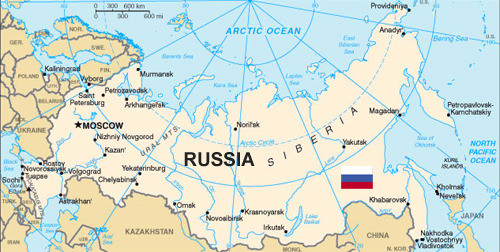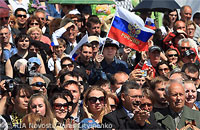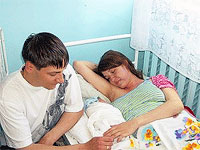[Russian Population:] Re: #27 JRL 2015-#51, Russia’s Demography Just Took A Significant Turn For The Worse

Subject: Re: #27 JRL 2015-#51, Russia’s Demography Just Took A Significant Turn For The Worse
Date: Fri, 13 Mar 2015
From: Sergey Slobodyan <Sergey.Slobodyan@cerge-ei.cz>
As Mark Adomanis correctly notes, one month doesn’t a trend make. Births in Nov-14 and Jan-15 did drop year-on-year, by 5.3 and 3.6%, respectively. But births in Dec-14, in contrast, have been the best in December for the last 20 years or so – plus 3.8% on Dec-13.
Taking a 3-months average could help in discerning the trend. From Nov-14 to Jan-15, 454.8 thousand babies were born, compared to 462.8 from Nov-13 to Jan-14, a decrease of 1.7%.
Not a ‘significant’, but a turn for the worse? Maybe. But let’s compare Nov-13 to Jan-14 period to Nov-12 to Jan-13. This comparison gives us a drop of 1.2%. Did this signify a change in the trend? Not really: for the whole 2014, births were 0.9% higher than in 2013.
Forecasting births in Russia has been an ungrateful occupation lately. Starting from Demographic Yearbook 2007, Rosstat provides demographic prognosis for the next 15-20 years.
The Yearbook is published towards the end of the year. Even so, predicting births for the next year has been difficult. Let’s look at the examples.
2007. Forecast for 2008 births – 1547.3 thousand, actual number – 1713.9.
2008. Forecast for 2009 births – 1656.3 thousand, actual number – 1764.2.
Starting from Yearbook 2009, Low, Medium, and High variants of the forecast are provided (only Medium one was available in 2007 and 2008). Did this allow Rosstat to capture the quickly improving reality? Not much.
2009. Forecast for 2010 births – 1651.4/1736.9/1763.1 thousand in Low/Medium/High variant, actual number – 1789.6.
2010. Forecast for 2011: 1574.5/1746.6/1877.0, actual number – 1793.8.
There was no Yearbook 2011, probably due to work on 2010 Census. Meanwhile, 1895.9 babies were born in 2012, quite unpredicted.
What happened next?
2012. Forecast for 2013: 1623.2/1753.7/1824.3, actual number – 1901.2.
2013. Forecast for 2014: 1751.7/1864.6/1904.3, actual number – 1918.1.
As we see, only the forecast for 2011 was moderately successful, as the actual births went between Medium and High forecasts. In all other years, even the High variant was too pessimistic. For 2015, the prognosis is 1874.8/1914.0/1951.6.
As forecasting goes, this record is pretty dismal. Why is it so bad? As is easy to see, Rosstat was always predicting a drop in number of births for the next year in its Medium variant forecasts, relative to the actual number for the current year. Very large late USSR-born generation getting out of the most fertile years and early Russian-born women entering this age is the most popular explanation for the number of births coming down inevitably – soon. Most probably, the Medium variant reflected this changing demographic pyramid, assuming that age-specific coefficients of fertility will remain the same. The fact that this assumption was always and so materially wrong reflects a rapid increase in intensity of births, commonly measured by the Total Fertility Rate, or TFR. Why did TFR improve so rapidly? Maternal capital or shift of the most fertile age from 20-24 to 25-29 are the two most popular explanations.
It is inevitable that the annual number of births will start decreasing at some point in the future. Still, watching every drop in monthly numbers and declaring a turn in a trend is a fool’s errand. After all, both MP Nikolai Gerasimenko and Sergey Zakharov, deputy director of the Institute of Demography of NRU HSE, declared beginning of a fall in birth numbers in early 2010, after watching a year-on-year drop in Jan-10, see ng.ru/economics/2010-04-01/1_demography.html. That declaration proved premature by at least five years.
NOTE: I am using only preliminary Rosstat data, which could differ from the final numbers by up to plus or minus 10 thousand annually, to ensure comparability with monthly data starting in 2002. For 2014-15, I consider the data excluding Crimean Federal District.
[featured images are file photos]


